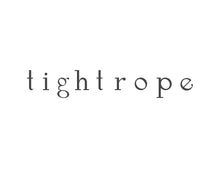Sustainability in Design
by Victoria Young,
Co-Founder at Tightrope
The most important place to start when considering sustainability in design is with what you want your approach to be. Personally I think it’s important to approach sustainability from a position of positivity. It’s better to celebrate the use of sustainability than to shame the lack of sustainability. Yes, we can always “do more” or “be better” but it’s important to praise the steps that are being taken. This way it’s easier to communicate different sustainable opportunities to your colleagues, clients, and audience as a whole. We, as designers, are in the fortunate position of being able to present our clients with different options. It’s up to us to present a set of options that could better our clients’ environment and the world’s environment.

From a healthy standpoint, we can explore the different possibilities that are out there for sustainability in design. One of the most common is material choice. There are many hazardous materials and finishes out there. One resource many manufacturers and makers rely on is the MSDS (Material Safety and Data Sheets). The MSDS lists the majority of materials and finishes and rates their safety in regards to its effects on humans and the environment. Designers may not be able to go through and read up on every material and finish out there, but it is useful for looking up specific materials your client may have questions about. Most naturally occurring materials are sustainable, such as iron, steel, aluminum, domestic wood, glass, etc. Commonly used materials that are not sustainable include metal alloys, plastics, resin, particle and composite boards, etc. One go-to resource to find out whether a material is sustainable is the internet. Most search engines will let you know if a material is considered sustainable or not.
Another thing that is key to sustainability in design is the techniques, practices, and modes of manufacturing. Not many people think about this aspect of sustainability. Although domestic wood is sustainable, pouring toxic polyurethane is very bad for the environment. Mild steel is also sustainable as a material choice, but the practice of stick welding steel is very toxic. Not all designers have intimate access to know whether or not a product is made in a sustainable manner. One way to find out (other than transparency from their suppliers) is to look into their finishes processes if possible. Most manufacturers, fabricators, and designers who work sustainably will be willing to walk you through their process and explain how their practice is eco-friendly.
Waste is another big factor in the design world. What do you do with the items your client wants to get rid of? How do you include items your client wishes to keep? Do you help or hinder them? Interior designers don’t just work with space, they work with stuff and usually a lot of it. The good thing here is that most interior designers and their clients don’t want to contribute to our massive waste problem. Living in New York, there are many recycling and upcycling companies. Big Reuse is a well established NYC company that collects and resells salvage items from architectural building elements down to a simple table lamp!
The last thing I’d like to touch on are a few resources and other brands to look for when you want to work or shop sustainably! Obviously my company, Tightrope, makes all sorts of lights, furniture and home goods from sustainable materials and eco-friendly practices. Another brand in the New York area is In2Green*. They make throws from sustainable materials in all sorts of colors and designs. Beehive Handmade* is a company based in Rhode Island that handcrafts small goods for your home and kitchen. Lastly I want to mention Fountain House + Body* in Manhattan. The shop is founded and run by Fountain House, an NYC non-profit that empowers adults struggling from mental illness and provides employment opportunities. Everything they sell in their Soho store are sustainable alternatives to everyday products such as eco-friendly spray cleaners, terry towel “cotton” rounds, non-plastic toothbrushes, etc.
I want to conclude by restating that it’s not about the steps not taken, but about every single step (no matter how small) taken on the journey of sustainability. By the sole fact that you are trying, means you are doing it right. The most important thing is to keep learning, be open to new possibilities, and remember that we are in this one together. Every hand helps us reach our goal.
*Due to COVID-19, these brands are only selling online. Please visit their websites to learn more.





